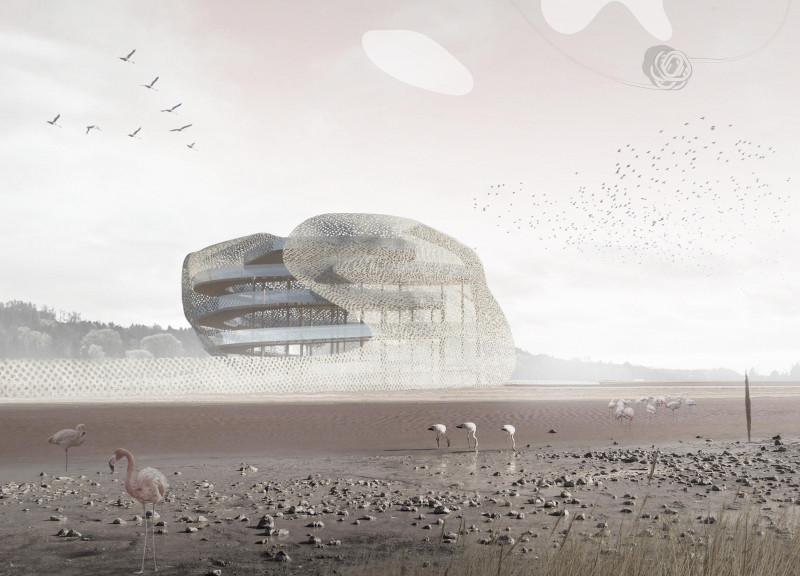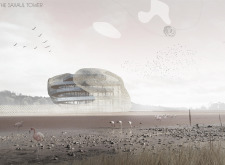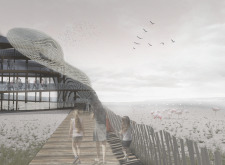5 key facts about this project
The Saxaul Tower is located within a nature reserve that serves as a habitat for several bird species, including flamingos. The structure acts as a visual point along the visitor path and encourages observation of the local wildlife and plant life. The design emphasizes a respectful relationship with the environment while ensuring that visitors can connect with nature in a meaningful way.
Design Concept
The vision for the tower involves careful blending with the natural setting. Inspired by the small shrubs found in the area, the design aims for the structure to integrate smoothly into its surroundings while still standing out as a significant feature. This concept reflects a broader intent to raise awareness about ecological systems and promote an appreciation for nature among visitors.
Accessibility and Visitor Experience
A critical component of the design is a ramp, which allows for easy access for all visitors. The ramp is more than just a practical pathway; it enhances the visitor experience by providing a smooth, enjoyable route around the tower. Composed of modular sections, it creates various pathways that invite exploration and interaction with the landscape.
Protective Features
The tower’s façade serves multiple roles as a protective barrier. It shields visitors from sun and wind, creating a more comfortable experience. At the same time, it limits human visibility from the surrounding wildlife, helping to reduce disturbances. This aspect of the design underscores the goal of creating a structure that coexists respectfully within its natural environment.
Material Considerations
Wood is the main material used in the construction of the tower, reflecting a commitment to sustainability. This choice not only provides durability but also connects the structure to the surrounding landscape. The walkways are also made from distinct modular sections that adapt to different soil conditions, reinforcing the relationship between the tower and its setting.
The Saxaul Tower emphasizes both functionality and aesthetic harmony with its environment. Visitors are encouraged to engage with the landscape through thoughtfully designed pathways that respect both human activity and the local ecosystem.






















































